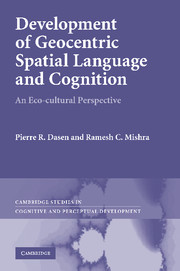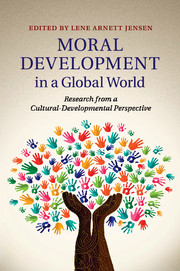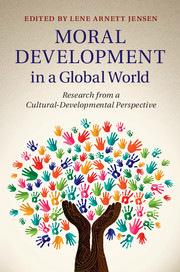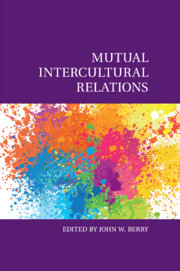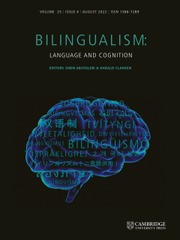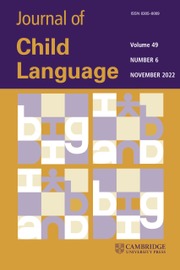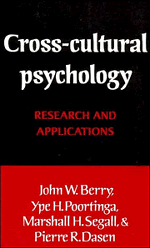Development of Geocentric Spatial Language and Cognition
Egocentric spatial language uses coordinates in relation to our body to talk about small-scale space ('put the knife on the right of the plate and the fork on the left'), while geocentric spatial language uses geographic coordinates ('put the knife to the east, and the fork to the west'). How do children learn to use geocentric language? And why do geocentric spatial references sound strange in English when they are standard practice in other languages? This book studies child development in Bali, India, Nepal, and Switzerland and explores how children learn to use a geocentric frame both when speaking and performing non-verbal cognitive tasks (such as remembering locations and directions). The authors examine how these skills develop with age, look at the socio-cultural contexts in which the learning takes place, and explore the ecological, cultural, social, and linguistic conditions that favor the use of a geocentric frame of reference.
- A cross-cultural study of child development in Bali, India, Nepal and Switzerland, particularly in the area of spatial language and cognition
- Original subject matter - the research deals with a cognitive process that has not previously been addressed in mainstream developmental psychology
- Integrates approaches from psychology, anthropology, linguistics and cognitive science
Reviews & endorsements
'A remarkable illustration of how research can integrate concepts, methods and findings from cognitive and developmental psychology, as well as from cultural anthropology and linguistics, to explain the development and use of spatial frames of reference in a number of cultures.' John W. Berry, Queen's University, Canada
'A wonderful contribution to the literature on child development in relation to language and culture.' Penelope Brown, Max Planck Institute for Psycholinguistics
'Dasen and Mishra invite us to revisit the concept of spatial knowledge from a radically decentered perspective. From Bali through India to Nepal, they treat us to a fascinating journey into a variety of cultures. This book offers a richly documented, refreshing alternative to the Western view of human spatial cognition and language.' Michel Denis, LIMSI-CNRS, National Center for Scientific Research, Orsay
Product details
January 2013Paperback
9781107412484
410 pages
229 × 152 × 21 mm
0.55kg
Available
Table of Contents
- Part I. Introduction and Methods:
- 1. Theory and research questions
- 2. Methods
- 3. Settings
- Part II. Results:
- 4. Pilot study in Bali and first study (India and Nepal, 1999–2000)
- 5. Returning to Bali: main study 2002–7
- 6. Varanasi
- 7. Kathmandu
- 8. Panditpur
- 9. Geneva
- Part III. Additional Studies:
- 10. Spatial language addressed to children
- 11. Geocentric gestures before language?
- 12. Spatial organization schemes
- 13. Neurophysiological correlates of geocentric space
- 14. Geocentric dead reckoning
- Part IV. Conclusions:
- 15. Discussion and conclusions
- Appendix 1. Summary of instructions, questionnaires, and coding schemes
- Appendix 2. Examples of language in each location
- Appendix 3. Extracts from school manuals.

